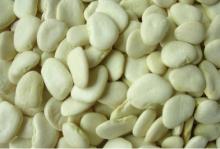

Like any such fervor, it offers a glimpse into our collective consciousness and how Americans choose to view the future. But there seems to be something behind this surge of interest that runs deeper than saving a few bucks or savoring sweet boiled peaches long past their season. The #canning hashtag on TikTok has drawn more than 800 million views and counting, along with a slew of videos that provide basic instructions and show off more creative concoctions.įor traditional canners who never let the practice be forgotten, this might feel like vindication. Ball, the preeminent manufacturer, warned on its website that its products were “selling out as soon as the retailers put them on the shelves.” But the rush has outlasted that moment of crisis. The metal lids and rubber bands needed to create airtight seals sold too fast that year for supermarkets to keep them in stock. Google searches for “canning” hit an all-time peak in the United States in 2020. O’Leary’s success is one example of a surprising boom in food preservation. She wrote a cookbook that has sold thousands of copies, and every public workshop she’s offered in the last three years has been completely booked. Amid nationwide quarantines and food shortages, she launched Wiley Canning Company in Nashville, Tennessee, to take up her own canning practice and teach others to put up food like her grandmother. That was in 2020, in the early weeks and months of the Covid-19 pandemic. Only as an adult did O’Leary, 32, realize she wanted those things, too. Canning gave her a way to tailor her pantry and feed her loved ones, but it also furnished some sense of control over an uncertain future. But each summer and fall, she put up her produce with pride, making it clear she did so for reasons beyond financial necessity.

Food storage felt requisite for the generation raised during the Great Depression. Her grandmother had taken to canning out of need. How did they defy the ravages of time? Even now, decades later, O’Leary can still hear that snap of the Mason jar lid. She poured out a quart of bright red tomatoes that looked fresh, as if she’d just plucked them from her garden in the Ohio countryside. Assuming you are getting enough protein in your diet and that your diet isn’t exclusively these beans, it is unlikely that you will have any problems from eating them.The twist of a wrist and the snap of an unsealed Mason jar seemed like a magic trick to young Chelsea O’Leary, watching her grandmother make her favorite homemade chili. However, given the relatively low cyanide level in US lima beans and the likely lower concentration in fresh beans, boiling or steaming beans for 5-10 minutes would cause a reduction in the amount of cyanide (as compared to eating fresh lima/butter beans out of the garden). Unfortunately, we have no information on the effectiveness of cooking methods commonly used for fresh lima beans. Steaming is less effective than boiling for reducing cyanide levels. Soaking in water for 24-48 hours, draining water, and then boiling for a short period of time (<5 min) in fresh water is also effective. Boiling in water for long periods of time (>30 min) in a large excess of water is the most effective method for reducing cyanide (80% of the original cyanide will be removed). Most cooking research related to cyanide removal has been conducted on cassava. Preparing lima beansĬooking lima beans can destroy the enzymes that release the cyanide however, total cooking time and method of cooking will have a different effect on cyanide removal. There are parts of Africa that suffer from chronic cyanide poisoning (a disease called "konzo") from eating excessive amounts of under-processed cassava during droughts. Sufficient protein in the diet provides adequate sulfur for your liver and muscle tissues to support excretion through urine. Humans have the ability to detoxify small amounts of cyanide as long as it isn’t consumed frequently and if they have sufficient protein in their diets. The cyanide content in US lima beans is usually 100-170 mg/kg. Fortunately, in the US, commercially grown lima beans must have less than 200 mg cyanide/kg. The cyanide content of wild lima beans can be very high. This is believed to provide a protective and evolutionary advantage to the plant.

When the plant is damaged (chewing) or at the early stages of processing (crushing, stirring, etc), cyanide can be released. Many other plants, particularly cassava, contain these types of compounds. Lima beans or butter beans (same species – Phaseolus lunatus L.) contain linamarin, a cyanogenic glycoside.


 0 kommentar(er)
0 kommentar(er)
